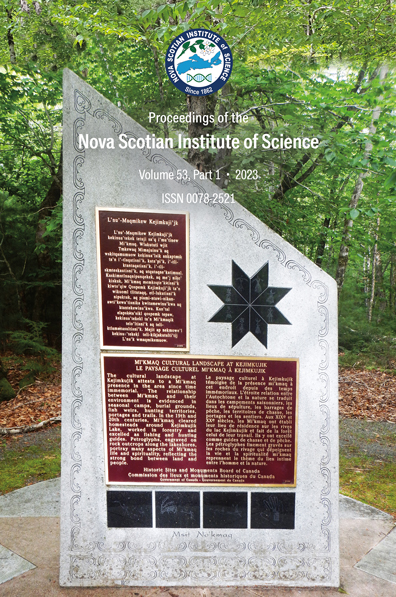Population characteristics and movements of striped bass Morone saxatilis (Walbaum, 1792) in the Mira River estuary, Cape Breton Island, Nova Scotia, Canada
DOI:
https://doi.org/10.15273/pnsis.v53i1.11821Abstract
The occurrence of striped bass outside the immediate vicinity of known spawning rivers in Canada is neither widely understood nor well studied. Striped bass in Canada are managed and assessed within three distinct units, the Bay of Fundy, the Gulf of St. Lawrence, and the St. Lawrence River; but stocks that may occur outside these units are unrecognized. We document a previously unstudied aggregation of striped bass in the Mira River estuary (MRe), Cape Breton Island (46° 01′N, 60° 03′W), a location on the east coast of Nova Scotia omitted from present management units but which has been long reported to host an aggregation. From July 2012 to November 2014, 62 striped bass within MRe were sampled and 31 were surgically implanted with VEMCO acoustic transmitters. Striped bass ranged in size from 31.6 to 125.0 cm total length and age 3 to 24 years. Acoustic telemetry from 2012 to 2015 elucidated residency and fidelity to the MRe with mid-estuary overwintering every year, freshwater residency of the adult population during spring, and a summer through autumn aggregation in the lower estuary. Of the 31 acoustically tagged striped bass, 24 remained in MRe throughout the study, six exhibited mid-summer departures to the Atlantic Ocean but returned by mid-autumn, while one left the MRe and was never detected again. Mira River SB with acoustic tags were never detected at nearby Ocean Tracking Network telemetry infrastructure. Striped bass stocks exhibit similar residency and fidelity patterns to their natal rivers and estuaries elsewhere in its Atlantic coast range which suggests the Mira River aggregation constitutes a possible distinct stock yet unrecognized by Canadian fisheries managers.


